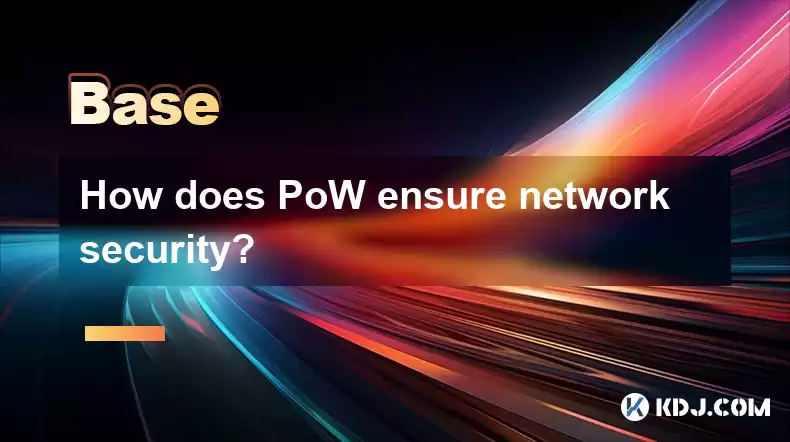-
 Bitcoin
Bitcoin $114100
-0.14% -
 Ethereum
Ethereum $3635
-0.73% -
 XRP
XRP $2.949
-2.85% -
 Tether USDt
Tether USDt $0.9999
-0.03% -
 BNB
BNB $760.3
-0.78% -
 Solana
Solana $163.8
-2.77% -
 USDC
USDC $0.9998
-0.04% -
 TRON
TRON $0.3323
-0.57% -
 Dogecoin
Dogecoin $0.2004
-2.99% -
 Cardano
Cardano $0.7245
-2.87% -
 Hyperliquid
Hyperliquid $37.52
-3.75% -
 Stellar
Stellar $0.3915
-3.58% -
 Sui
Sui $3.416
-2.20% -
 Bitcoin Cash
Bitcoin Cash $559.5
-0.84% -
 Chainlink
Chainlink $16.41
-2.16% -
 Hedera
Hedera $0.2406
-1.78% -
 Ethena USDe
Ethena USDe $1.001
0.00% -
 Avalanche
Avalanche $22.13
-1.98% -
 Litecoin
Litecoin $117.8
-4.32% -
 UNUS SED LEO
UNUS SED LEO $8.989
0.01% -
 Toncoin
Toncoin $3.183
-5.09% -
 Shiba Inu
Shiba Inu $0.00001214
-1.97% -
 Uniswap
Uniswap $9.654
-1.71% -
 Polkadot
Polkadot $3.616
-1.18% -
 Monero
Monero $291.6
-2.66% -
 Dai
Dai $0.9999
0.00% -
 Bitget Token
Bitget Token $4.310
-1.10% -
 Cronos
Cronos $0.1382
-1.93% -
 Pepe
Pepe $0.00001021
-3.40% -
 Aave
Aave $257.9
-1.42%
How does PoW ensure network security?
Proof-of-Work (PoW) secures cryptocurrencies by requiring miners to solve complex puzzles, making blockchain manipulation computationally infeasible. This decentralized system's robust security is proportional to its total hashing power, though energy consumption remains a significant drawback.
Mar 05, 2025 at 11:55 am

Key Points:
- Proof-of-Work (PoW) secures cryptocurrency networks by requiring miners to expend significant computational resources to solve complex cryptographic puzzles.
- This process makes it computationally infeasible for malicious actors to alter the blockchain's history or create fraudulent transactions.
- The difficulty of the puzzles adjusts dynamically to maintain a consistent block generation rate, ensuring network stability.
- The decentralized nature of PoW, with many miners competing, prevents any single entity from controlling the network.
- While energy-intensive, PoW offers a robust and proven security model for numerous cryptocurrencies.
How Does PoW Ensure Network Security?
Proof-of-Work (PoW) is a consensus mechanism used in many cryptocurrencies, most notably Bitcoin, to secure the network and validate transactions. Its core function lies in making it extremely difficult and costly for attackers to manipulate the blockchain. This difficulty acts as a deterrent, ensuring the integrity of the network.
The process begins with miners competing to solve complex mathematical problems. These problems are computationally intensive, requiring significant processing power and energy. The first miner to solve the puzzle gets to add the next block of verified transactions to the blockchain, receiving a reward in cryptocurrency.
This competition is crucial for security. A single attacker would need to control more than 50% of the network's hashing power to successfully alter the blockchain. This is incredibly expensive and difficult, given the distributed nature of PoW mining.
The Role of Hashing Power in Security
The security of a PoW network is directly proportional to its total hashing power. Hashing power refers to the combined computational power of all miners participating in the network. The more hashing power a network has, the more secure it becomes against attacks.
This is because an attacker needs to surpass the combined hashing power of all legitimate miners to launch a successful 50% attack. The sheer cost of acquiring and maintaining such a vast amount of computing power makes this virtually impossible for most malicious actors.
Furthermore, the difficulty of the cryptographic puzzles adjusts dynamically based on the network's hashing power. If the hashing power increases, the difficulty increases proportionally, maintaining a consistent block generation time. Conversely, if hashing power decreases, the difficulty adjusts downwards.
Decentralization and its Impact on Security
PoW's decentralized nature is a cornerstone of its security. Unlike centralized systems controlled by a single entity, PoW distributes the responsibility of securing the network among many independent miners.
This decentralization makes it extremely difficult for any single individual or group to exert undue influence or control over the network. Even if a significant portion of miners colluded, they would still face the immense computational challenge of outpacing the remaining honest miners.
The distributed nature also enhances resilience against attacks. If one part of the network experiences a failure or attack, the rest of the network can continue operating normally, ensuring the ongoing integrity of the blockchain.
The Energy Consumption Debate
A significant criticism of PoW is its high energy consumption. The computational process involved in solving cryptographic puzzles requires substantial energy, leading to environmental concerns.
However, it is important to note that the energy consumption is directly related to the network's security. The more energy a miner consumes, the more secure the network becomes. There are ongoing discussions and developments within the cryptocurrency space to explore more energy-efficient consensus mechanisms.
Nevertheless, the energy consumed by PoW is a trade-off for the robust security it provides. The level of security it offers is unparalleled by many other consensus mechanisms.
Step-by-Step Overview of PoW's Security Mechanism:
- Transaction Broadcasting: Users broadcast their transactions to the network.
- Transaction Verification: Miners verify the transactions for validity.
- Block Creation: Miners bundle verified transactions into a block.
- Proof-of-Work Calculation: Miners compete to solve a computationally intensive cryptographic puzzle.
- Block Addition: The first miner to solve the puzzle adds the block to the blockchain.
- Blockchain Propagation: The updated blockchain is propagated across the network.
Common Questions and Answers:
Q: Is PoW truly secure against all attacks?
A: While PoW is highly secure, it's not invulnerable. Highly sophisticated and well-funded attacks remain theoretically possible, though practically infeasible due to the computational resources required. The security is proportional to the network's total hashing power.
Q: How does PoW handle double-spending attempts?
A: The computational cost of rewriting a significant portion of the blockchain to reverse transactions makes double-spending extremely difficult and impractical under PoW. The longer a transaction remains on the chain, the more secure it becomes.
Q: What are the alternatives to PoW?
A: Several alternative consensus mechanisms exist, such as Proof-of-Stake (PoS), Delegated Proof-of-Stake (DPoS), and Practical Byzantine Fault Tolerance (PBFT). These offer potentially more energy-efficient solutions but may present different security trade-offs.
Q: How does the difficulty adjustment work in practice?
A: The difficulty is adjusted periodically, typically every two weeks for Bitcoin, based on the average time it takes to mine a block. If blocks are being mined too quickly, the difficulty increases; if they are taking too long, the difficulty decreases. This maintains a relatively constant block generation rate.
Q: Can a single powerful miner compromise the PoW network?
A: A single miner, no matter how powerful, cannot compromise the network unless they control more than 50% of the total network's hashing power. This is extremely unlikely and prohibitively expensive. The decentralized nature of PoW makes it highly resistant to single-point failures.
Disclaimer:info@kdj.com
The information provided is not trading advice. kdj.com does not assume any responsibility for any investments made based on the information provided in this article. Cryptocurrencies are highly volatile and it is highly recommended that you invest with caution after thorough research!
If you believe that the content used on this website infringes your copyright, please contact us immediately (info@kdj.com) and we will delete it promptly.
- Coinbase, Financing, and the Crypto Market: Navigating Choppy Waters in NYC Style
- 2025-08-06 12:50:11
- Bitcoin in Indonesia: Crypto Education and Economic Strategy
- 2025-08-06 12:50:11
- DeriW Mainnet: Zero Gas Fees Revolutionize On-Chain Derivatives Trading
- 2025-08-06 10:30:11
- IOTA, Cloud Mining, and Eco-Friendly Crypto: A New York Investor's Take
- 2025-08-06 10:30:11
- Kaspa (KAS) Price Prediction: August 6 - Will It Break Free?
- 2025-08-06 10:50:12
- Pension Funds, Bitcoin ETFs, and Exposure: A New Era of Institutional Crypto Adoption
- 2025-08-06 12:55:12
Related knowledge

What is the difference between CeFi and DeFi?
Jul 22,2025 at 12:28am
Understanding CeFi and DeFiIn the world of cryptocurrency, CeFi (Centralized Finance) and DeFi (Decentralized Finance) represent two distinct financia...

How to qualify for potential crypto airdrops?
Jul 23,2025 at 06:49am
Understanding What Crypto Airdrops AreCrypto airdrops refer to the distribution of free tokens or coins to a large number of wallet addresses, often u...

What is a crypto "airdrop farmer"?
Jul 24,2025 at 10:22pm
Understanding the Role of a Crypto 'Airdrop Farmer'A crypto 'airdrop farmer' refers to an individual who actively participates in cryptocurrency airdr...

What is the difference between a sidechain and a Layer 2?
Jul 20,2025 at 11:35pm
Understanding the Concept of SidechainsA sidechain is a separate blockchain that runs parallel to the main blockchain, typically the mainnet of a cryp...

What is the Inter-Blockchain Communication Protocol (IBC)?
Jul 19,2025 at 10:43am
Understanding the Inter-Blockchain Communication Protocol (IBC)The Inter-Blockchain Communication Protocol (IBC) is a cross-chain communication protoc...

How does sharding improve scalability?
Jul 20,2025 at 01:21am
Understanding Sharding in BlockchainSharding is a database partitioning technique that is increasingly being adopted in blockchain technology to enhan...

What is the difference between CeFi and DeFi?
Jul 22,2025 at 12:28am
Understanding CeFi and DeFiIn the world of cryptocurrency, CeFi (Centralized Finance) and DeFi (Decentralized Finance) represent two distinct financia...

How to qualify for potential crypto airdrops?
Jul 23,2025 at 06:49am
Understanding What Crypto Airdrops AreCrypto airdrops refer to the distribution of free tokens or coins to a large number of wallet addresses, often u...

What is a crypto "airdrop farmer"?
Jul 24,2025 at 10:22pm
Understanding the Role of a Crypto 'Airdrop Farmer'A crypto 'airdrop farmer' refers to an individual who actively participates in cryptocurrency airdr...

What is the difference between a sidechain and a Layer 2?
Jul 20,2025 at 11:35pm
Understanding the Concept of SidechainsA sidechain is a separate blockchain that runs parallel to the main blockchain, typically the mainnet of a cryp...

What is the Inter-Blockchain Communication Protocol (IBC)?
Jul 19,2025 at 10:43am
Understanding the Inter-Blockchain Communication Protocol (IBC)The Inter-Blockchain Communication Protocol (IBC) is a cross-chain communication protoc...

How does sharding improve scalability?
Jul 20,2025 at 01:21am
Understanding Sharding in BlockchainSharding is a database partitioning technique that is increasingly being adopted in blockchain technology to enhan...
See all articles

























































































